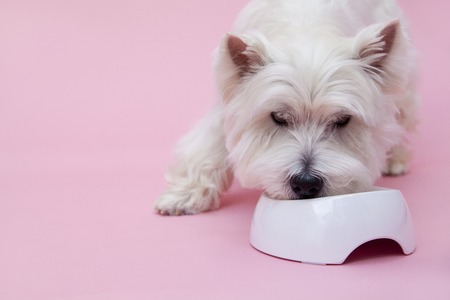Understanding Your Small Pets Needs
Every small pet, whether it’s a hamster, guinea pig, rabbit, or mouse, has its own unique requirements for a clean and healthy living space. Knowing these differences is the first step to making sure your furry friend stays happy and healthy. Regular cleaning and maintenance aren’t just about keeping things tidy—they’re essential for preventing illness, reducing stress, and making your pet feel at home.
Why Cleanliness Matters
Small pets are sensitive to their environment. Dirty habitats can quickly lead to health problems like respiratory issues, skin irritations, or infections. A clean habitat helps:
- Prevent the buildup of harmful bacteria and mold
- Reduce bad smells that can stress your pet (and your family!)
- Encourage natural behaviors like burrowing or nesting
- Promote good hygiene and overall well-being
Understanding Different Pet Needs
Each type of small pet has specific needs when it comes to habitat cleanliness. Here’s a quick comparison:
| Pet Type | Habitat Type | Cleaning Frequency | Special Considerations |
|---|---|---|---|
| Hamster | Cage with bedding (paper or aspen) | Spot clean daily, full clean weekly | Loves to burrow—avoid strong-smelling cleaners |
| Guinea Pig | Cage with fleece or paper bedding | Spot clean daily, full clean 1-2 times/week | Sensitive respiratory systems—dust-free bedding is best |
| Rabbit | Cage or pen with litter box and bedding | Litter box daily, full clean weekly | Litter boxes need special attention to prevent odors |
| Mouse/Rat | Cage with paper bedding or fabric liners | Spot clean daily, full clean 1-2 times/week | Mice/rats love to chew—avoid toxic cleaners and keep toys safe |
Tips for Success:
- Observe your pet’s behavior for signs of stress or discomfort in their habitat.
- Avoid using harsh chemicals; stick to pet-safe cleaners or diluted vinegar.
- Make cleaning time part of your routine so your pet gets used to it.
- If you notice unusual smells, stains, or your pet acting differently, check their habitat right away.
By understanding the specific needs of your small pet, you’ll be better prepared to create a healthy and comfortable home for them. In the next section, we’ll look at how to set up your cleaning schedule and which tools make the job easier.
2. Choosing Safe and Effective Cleaning Supplies
When it comes to keeping your small pet’s habitat clean, choosing the right cleaning supplies is just as important as how often you clean. Many common household cleaners contain chemicals that can be harmful or even deadly to pets like hamsters, guinea pigs, rabbits, mice, rats, and gerbils. Here’s what you need to know about selecting safe and effective cleaning products that are widely available in the US.
Pet-Safe Cleaning Products
Look for products labeled as “pet-safe” or “non-toxic.” These are specially formulated to be gentle on your pet’s respiratory system and skin. If you’re not sure, here are some popular options you can find at most US stores:
| Product Type | Example Brands | Safe For | Where to Buy |
|---|---|---|---|
| Unscented Dish Soap | Dawn (Original), Seventh Generation Free & Clear | Cages, water bottles, food bowls | Grocery stores, Amazon, Walmart |
| Vinegar (Diluted 1:1 with water) | Any white vinegar brand | Cage bases, glass tanks, plastic accessories | Grocery stores, Target, Costco |
| Commercial Pet Cage Cleaners | Nature’s Miracle Small Animal Cage Cleaner, Kaytee Clean Cage | Most cage surfaces and accessories | Petco, PetSmart, Chewy.com |
| Baking Soda (for deodorizing) | Arm & Hammer Baking Soda | Beneath bedding only (never directly on pets) | Grocery stores, Walmart, Amazon |
Avoiding Toxic Chemicals
Certain chemicals commonly found in household cleaners are dangerous for small pets. Always avoid these when cleaning your pet’s habitat:
- Bleach or Ammonia: The fumes can irritate your pet’s lungs and cause serious health issues.
- Scented or Antibacterial Cleaners: Artificial fragrances and harsh antibacterial agents can linger and harm sensitive animals.
- Pine or Cedar Oil-Based Products: These natural oils may smell nice but are toxic for many small mammals.
- Aerosol Sprays: Fine particles can settle on surfaces and be ingested or inhaled by your pet.
Tips for Safer Cleaning
- Always rinse thoroughly with water after cleaning to remove any residue.
- Let all cleaned items dry completely before returning them to the habitat.
- If in doubt about a product’s safety, check with your vet or choose plain soap and water.
- Avoid strong-smelling cleaners—even “natural” essential oils can be risky for pets.
Your Pet’s Safety First!
The best approach is to keep it simple—mild soap, water, and elbow grease go a long way. By using safe products and avoiding harsh chemicals, you’ll help ensure your small pet stays healthy and happy in their clean home.

3. Establishing a Cleaning Routine
Keeping your small pet’s habitat clean is essential for their health and happiness, but it doesn’t have to be overwhelming. By setting up a consistent cleaning routine, you’ll make maintenance easier and ensure your pet has a fresh and comfortable home every day. Here’s how you can break down the process into manageable steps that fit into your busy schedule.
Daily Spot Cleaning
Quick daily cleaning keeps odors in check and prevents messes from building up. Focus on removing soiled bedding, uneaten food, and any waste you spot. This only takes a few minutes but makes a big difference in your pet’s environment.
Daily Checklist
| Task | Why It Matters |
|---|---|
| Remove soiled bedding | Prevents odors and bacteria growth |
| Pick out droppings/waste | Keeps the habitat hygienic |
| Replace old food & water | Ensures your pet gets fresh nutrition daily |
Weekly Deep Clean
Once a week, set aside time for a deeper clean. This involves changing all bedding, washing dishes and toys, and wiping down the habitat itself. Weekly cleaning helps eliminate germs and gives you a chance to check on your pet’s overall wellbeing.
Weekly Cleaning Steps
| Step | Description |
|---|---|
| Remove your pet safely | Place them in a secure temporary space while you clean |
| Take out all bedding and accessories | Toss old bedding, remove dishes, toys, hideouts, etc. |
| Wash items with mild soap & hot water | Avoid strong chemicals—rinse thoroughly! |
| Wipe down the habitat | Use pet-safe cleaners or vinegar solution for plastic/glass surfaces |
| Add fresh bedding and replace accessories | Set everything back up for your pet to enjoy their refreshed home |
Tips for Easy Maintenance
- Keep cleaning supplies handy near the habitat—think paper towels, gloves, trash bags, and sprays.
- Create reminders on your phone or calendar for weekly deep cleans.
- If you have kids at home, involve them with age-appropriate tasks to teach responsibility.
A regular cleaning schedule not only keeps things tidy but also helps you catch any changes in your pet’s habits or health early on. With these simple routines, maintaining your small pet’s habitat will feel like second nature!
4. Proper Cleaning Techniques for Cages, Tanks, and Accessories
Step-by-Step Cleaning Guide for Different Habitats
Keeping your small pet’s habitat clean is key to their health and happiness. Each type of habitat—like wire cages, glass tanks, or plastic enclosures—needs a specific cleaning method. Here’s a simple guide you can follow:
| Habitat Type | How Often | Cleaning Steps |
|---|---|---|
| Wire Cage | Weekly deep clean Spot clean daily |
|
| Glass Tank (for hamsters, reptiles) | Every 1-2 weeks Spot clean every few days |
|
| Plastic Enclosure (e.g., travel cages) | After each use or weekly if used regularly |
|
How to Clean Common Accessories Safely
| Accessory | Cleaning Method |
|---|---|
| Water Bottles |
|
| Food Dishes/Bowls |
|
| Bedding/Blankets |
|
TIPS FOR SAFE CLEANING PRODUCTS AND PRACTICES
- Avoid bleach or ammonia-based cleaners—they can harm your pet’s lungs and skin.
- If you use vinegar solutions, make sure to rinse well to prevent lingering odors or tastes that may bother your pet.
- Select products labeled “pet safe” whenever possible, especially for disinfecting tanks or cages.
Your Pet’s Comfort Comes First!
The goal is always to provide a fresh, comfortable home without exposing your pet to harsh chemicals or sudden changes in their environment. Take your time during cleaning days—your furry (or scaly) friend will thank you!
5. Preventing Odors and Promoting a Healthy Environment
Why Odor Control Matters
No one wants their home to smell like a pet cage! More importantly, strong odors can signal bacteria buildup or poor air quality, both of which may harm your small pet’s health. Regular maintenance not only keeps your space fresh but also ensures your pet stays happy and healthy.
Proven Strategies for Minimizing Odors and Bacteria
1. Choose the Right Bedding
The type of bedding you use makes a big difference. Opt for high-absorbency, low-dust options made specifically for small animals, such as paper-based or aspen shavings. Avoid cedar or pine shavings, as they can irritate your pet’s respiratory system.
2. Stick to a Cleaning Schedule
Consistency is key! Use this simple table to guide your cleaning routine:
| Task | Frequency |
|---|---|
| Spot clean (remove soiled bedding, uneaten food) | Daily |
| Replace bedding and wipe down surfaces | Weekly |
| Deep clean habitat with pet-safe disinfectant | Monthly |
3. Ventilation Is Important
Place habitats in well-ventilated areas but away from drafts or direct sunlight. Good airflow helps prevent musty smells and keeps humidity in check.
4. Use Safe Deodorizers Wisely
Avoid chemical air fresheners near your pet’s habitat. Instead, sprinkle a light layer of baking soda under the bedding to absorb odors naturally—just make sure your pet cant eat it!
5. Wash Accessories Regularly
Bottles, bowls, wheels, and toys should be washed with mild dish soap and hot water weekly to prevent bacterial growth and lingering smells.
Supporting Your Pet’s Wellbeing
A clean, fresh-smelling habitat means more than just a pleasant home—it helps prevent illness and stress in your small pet. By sticking to proven cleaning routines, using safe products, and ensuring good ventilation, you’ll create an environment where your furry friend can thrive.


